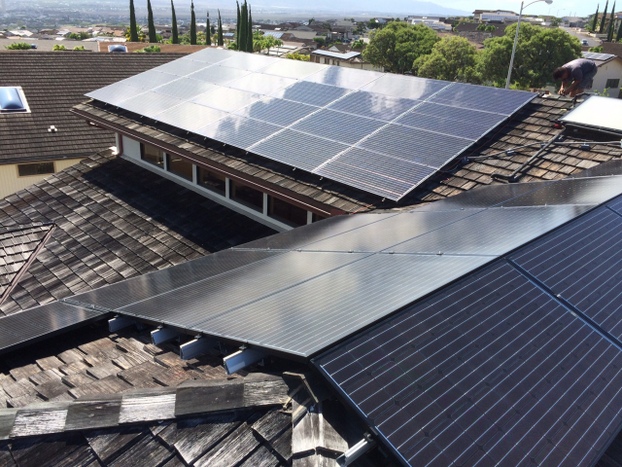Not required to be in unison, just that if frequency goes out of spec (above 60.5 Hz), to the extent all inverters observe that at the same time, all will drop off 5 minutes later at the same time.
Modulate down in response to frequency increase is an optional implementation, not required.
"A Frequency-Watt function, which reduces real power on over frequency, is also allowed to be used given agreement by the utility."
For an inverter which doesn't implement Frequency-Watt, w0ce frequency exceeds 60.5 Hz, instead of being required to drop off immediately, under Rule 21 the inverter is required remain online a additional 299 seconds and is required to drop off by 300 seconds. If frequency exceeds 62 Hz it is required to drop off immediately.
So this gives grid 5 minutes to get frequency back under control before power from PV goes offline.
To the extent installed systems do implement Frequency-Watt, by raising frequency the grid will reduce the delivered power. But unless generators under other control mechanisms are told to reduce power and frequency is returned to under 60.5 Hz, at 5 minutes all the non-Frequency-Watt inverters will drop off. So it depends on having enough conventionally controlled generators to make up for 100% of the PV that suddenly goes offline (or storage to tied it over for 5 minutes until they return.)
A multi-year effort has been ongoing in California to update technical requirements for connecting Distributed Energy Resources (DER) to the grid, known as Rule 21. The experience of Germany was cited as one reason to take action. In Germany, significant grid destabilization problems arose when...

solarbuildermag.com
Frequency of course is the same grid-wide. That's apparently Western grid, separate from Eastern grid, separate from Texas grid.
Similar optional Volt-Watt function.
Above 110% of of nominal voltage, required to remain online for 20 seconds, above 120% required to disconnect. Unless it implements Volt-Watt.
That seems better for grid stability because any local area of the grid with too much generation compared to loads and transmission lines able to carry power away would result in voltage increasing so PV production would be reduced and it could achieve balance.
But only if a substantial fraction implement Volt-Watt, otherwise after 20 seconds too much goes offline.
Just my utility connection and branch to inverter shows significant voltage swing with PV production. Apparently the utility is likely to feed somewhat high voltage into long branches of wiring, keep voltage closer to upper limit under low load so it doesn't go below lower limit when everybody turns on their A/C or heat. This could cause a large PV system to push it a bit higher and disconnect. Changing inverter voltage settings outside spec isn't allowed. Using a buck-boost transformer would be a software-free way to accomplish exactly the same thing. Volt-Watt would have inverter adjust power output to keep the voltage within limits.



